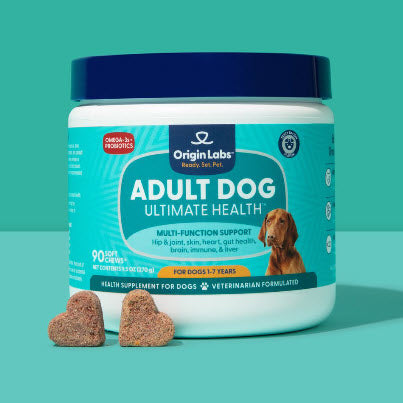Introduction
Pet owners often wonder about the variety of human foods that are safe for their canine companions. A common question is: can dogs eat lima beans? These beans are known for their nutritional value, but it's essential to consider how they fit into a dog diet. Dogs require a balanced diet to maintain their health and vitality. This includes a mix of proteins, carbohydrates, fats, vitamins, and minerals that align with their specific nutritional needs.
The nutritional value of lima beans for dogs is not in question—they offer a range of benefits that can complement your pet's diet. However, any dietary changes should be approached with caution. Before introducing new elements such as lima beans into your dog's routine, it’s advisable to consult with a veterinarian. They can provide personalized advice based on your dog's health history and dietary requirements.
For dogs in different life stages, tailored nutrition is crucial. Puppies, for instance, have different requirements compared to adult dogs. To ensure that your dog receives optimal health support throughout their life stages, you might consider products designed specifically for them, such as health supplements for adult dogs or supplements for growing puppies from Origin Labs.
Understanding the role of lima beans within the context of a balanced canine diet ensures that you make informed decisions about what you feed your four-legged friend.
The Nutritional Benefits and Risks of Feeding Lima Beans to Dogs
When it comes to feeding our furry friends, it's crucial to understand what's going into their bodies. Lima beans, a type of legume also known as butter beans, are one food item that's sparked curiosity amongst dog owners.
What Makes Lima Beans Beneficial?
Lima beans are packed with nutrients that can contribute positively to a dog's health. They're high in protein, fiber, and several essential vitamins and minerals.
Protein Content and Benefits for Dogs
Protein is vital for dogs as it helps build and repair tissues. It's also necessary for the growth and development of puppies. Lima beans are an excellent source of plant-based protein, making them a suitable addition to your dog's diet, particularly if you're aiming for a balanced nutritional intake.
High Fiber Content and Its Impact on Digestion
Fiber aids in digestion by adding bulk to the stool, which can help regulate bowel movements. Given that lima beans are high in fiber, they can be beneficial for dogs suffering from irregular bowel movements or constipation.
Essential Vitamins and Minerals
Lima beans contain several essential vitamins and minerals beneficial for dogs' overall health. These include:
- Iron: Helps produce red blood cells.
- Magnesium: Supports nerve function.
- Potassium: Regulates fluid balance in the body.
- Zinc: Essential for immune function.
- Vitamins B1 and B6: Support energy metabolism.
However, despite these benefits, it’s important to remember that lima beans should not replace a complete, balanced dog food diet but rather act as a supplement or occasional treat.
Possible Risks Associated with Lima Beans
While lima beans are generally safe for dogs to consume, there are a few potential risks worth noting.
Firstly, raw lima beans contain a compound called linamarin which can turn into cyanide when the beans are crushed or chewed. Therefore, it's essential to cook lima beans thoroughly before feeding them to your dog to neutralize this compound.
Secondly, feeding your dog too many lima beans could lead to excessive gas and discomfort due to the high fiber content.
How Dietary Restrictions Relate to Consuming Lima Beans
As with any food, some dogs might be allergic to lima beans. Symptoms of an allergic reaction can include itching, swelling, difficulty breathing, and gastrointestinal upset. If your dog displays any of these symptoms after eating lima beans, consult a veterinarian immediately.
If your dog has certain health conditions such as kidney disease, you should avoid feeding them lima beans due to their high protein content which could exacerbate the condition.
In cases where dogs are on a strict diet for weight management or medical reasons, you should consult with a vet before introducing new foods such as lima beans.
To sum up, while lima beans can be a healthy addition to your dog’s diet thanks to their high protein and fiber content along with essential vitamins and minerals, they're not without potential risks. It's crucial to consider these factors and consult with a veterinarian before incorporating lima beans or any new food into your dog’s diet.
Feeding Lima Beans to Your Dog: Preparing, Serving, and Moderation
If you've decided to introduce lima beans into your dog's diet, it's critical to understand the proper methods of cooking lima beans for dogs, the appropriate serving size of lima beans for dogs, and the importance of moderation in feeding lima beans to dogs.
Proper Cooking Methods
The first step in feeding lima beans to your dog is ensuring they are properly prepared. According to NASC guidelines, it's essential to thoroughly cook lima beans before serving them. Raw or undercooked beans can contain harmful substances that could cause digestive issues in dogs.
Remember these key points when preparing lima beans:
- Soak dried beans. Prior to cooking, soaking dried lima beans can aid digestion by reducing phytic acid and neutralizing lectins which could otherwise lead to discomfort or upset stomach in your pet.
- Cook thoroughly. Lima beans must be cooked until they're soft enough for your dog to easily chew and digest.
- Avoid seasonings and additives. Dogs have different dietary needs than humans. Many seasonings and additives we enjoy can be harmful or even toxic to dogs. It's best to cook the beans plain without any salt, spices, or oil.
Serving Size and Moderation
Once cooked, determining the appropriate serving size is crucial. As a rule of thumb, treats or additions like lima beans should make up no more than 10% of your dog's daily caloric intake. This percentage maintains a balanced diet while preventing overconsumption which could lead to weight gain or nutrient imbalances.
Consider your dog’s size and weight when deciding how many cooked lima beans to serve:
- Small Dogs (10 lbs or less): A teaspoonful will suffice.
- Medium Dogs (10-30 lbs): They can handle up to a tablespoon.
- Large Dogs (30 lbs and above): A larger serving, up to 2 tablespoons, is appropriate.
It's important to emphasize the role of moderation when introducing new foods into a dog's diet. Start with small portions and gradually increase the quantity over time while observing any changes in your dog's behavior, digestion, or overall health. If any adverse reactions occur, discontinue the beans and consult your vet.
In essence, incorporating lima beans into your dog's diet involves more than just adding them to their food bowl. Following these guidelines ensures that they are prepared safely and served in suitable amounts. It's all about striking balance - giving your furry friend the nutritional benefits of lima beans without risking their well-being.
Exploring Alternatives: Other Safe Beans for Dogs
While lima beans can be an acceptable addition to your dog's menu, it's worth noting there are other alternatives to lima beans for dogs that are equally nutritious and safe. Different types of beans provide a wealth of proteins, vitamins, and minerals necessary for a healthy canine lifestyle.
Among the numerous beans that dogs can safely consume, some standouts include:
- Black Beans: These beans are packed with protein and fiber, which help keep your dog's muscles strong and digestion regular. Furthermore, they contain antioxidants that support the immune system.
- Pinto Beans: High in fiber content, pinto beans aid in maintaining proper digestive health. They also supply a good amount of essential nutrients like magnesium and potassium.
- Kidney Beans: Known for their high protein content, kidney beans also offer iron and magnesium which contribute to energy production and bone health respectively.
- Chickpeas: Also known as garbanzo beans, chickpeas are rich in dietary fiber as well as important vitamins like folate and vitamin B-6.
When considering these alternatives, remember that individual dogs may have specific dietary restrictions or allergies.
For instance:
- Dogs with sensitive stomachs may find certain types of beans difficult to digest.
- Some dogs may be allergic to specific kinds of beans.
Hence, it is crucial to observe your pet's reaction when introducing a new type of bean into their diet.
Regardless of the type of bean chosen, preparation remains constant — they should be cooked thoroughly without any seasonings or additives. Serving size should align with the dog's weight and overall diet plan. Likewise, moderation is key; overfeeding can lead to digestive issues or nutrient imbalances.
The variety of safe types of beans for dogs allows pet owners to choose what best suits their furry friend's needs. Each bean type presents a different blend of nutrients and benefits, making them a viable component of a balanced canine diet.
While beans can be beneficial, they should not replace the primary protein source in your dog's diet. Beans are best used as a supplement to high-quality dog food, providing an occasional treat or meal additive.
Consulting an Expert: The Veterinarian's Perspective on Feeding Lima Beans to Dogs
When it comes to adding lima beans to your dog's diet, it's important to get vet advice on feeding lima beans to dogs. A veterinarian can provide personalized recommendations to ensure the health and safety of your pet. They will consider your dog's individual needs and any existing health conditions before suggesting whether or not lima beans are suitable.
Why Consult a Veterinarian?
There are several reasons why consulting a veterinarian is beneficial when deciding to feed lima beans to your dog:
- Individual Health Evaluation: Every dog is different, and what works for one may not work for another. A vet can assess your dog's overall health and determine if incorporating lima beans into their diet is appropriate.
- Allergy Identification: Dogs can have allergies or sensitivities to certain foods, including legumes like lima beans. Vets are trained to identify these issues and can advise if it's safe for your dog to consume them.
- Balanced Diet Assurance: While lima beans can be a nutritious addition to a dog's diet, it's essential to ensure they are balanced with other food sources. Veterinarians can help create a well-rounded meal plan that includes lima beans without causing any nutritional imbalances.
- Safe Introduction: Introducing new foods too quickly or in large quantities can lead to digestive upset in dogs. Vets can provide guidance on how to safely introduce lima beans into your dog's diet, minimizing the risk of any gastrointestinal issues.
NASC Recommendations
The National Animal Supplement Council (NASC) has established guidelines for pet supplements, including those made with lima beans. These guidelines aim to protect consumers and ensure that any claims made about these products are truthful and backed by scientific evidence.
When consulting with a veterinarian about feeding lima beans to your dog, they will be familiar with these NASC recommendations and can help you make informed decisions. This ensures that any dietary changes you make, including the addition of lima beans, are in line with industry standards for animal health and wellness.
Expertise in Serving Size and Frequency
One of the main concerns when feeding lima beans to dogs is determining the appropriate serving size and frequency. Veterinarians can offer valuable advice in this area, taking into account factors such as your dog's:
- Breed
- Size
- Weight
- Activity level
Based on these considerations, they can recommend the optimal amount of lima beans to include in your dog's meals and how often they should be given.
It's also important to be aware of any potential signs that indicate whether your dog is responding positively or negatively to the new food. Veterinarians can educate pet owners on what to look out for and when to seek further guidance if needed.
Regular Check-ups
Even with expert advice, it's crucial to monitor your dog's reaction over time after introducing lima beans or any new food item. Consistent veterinary check-ups play a vital role in this process, allowing for ongoing assessments of your dog's health and making any necessary adjustments to their diet.
By seeking veterinary guidance before making dietary changes for your dog, you lay the groundwork for a healthy, balanced diet that caters to their specific needs. This proactive approach promotes well-being and can prevent complications associated with unsupervised alterations in a pet’s nutrition.
Conclusion
Addressing the question, can dogs eat lima beans? this comprehensive guide has ventured to provide an in-depth answer. It's noted that while lima beans are packed with nutritional benefits, they should only be given to dogs in moderation. The protein content, essential vitamins and minerals found in lima beans can contribute to a dog's health. However, potential risks are also present if consumed excessively or prepared improperly.
A Balanced Diet is Key
Remember that a balanced diet plays a critical role in your dog's overall health. Considering a variety of food sources, not solely lima beans, is crucial for providing all the necessary nutrients. Lima beans can certainly be part of their diet, but it should not replace other essential foods.
Vet-Approved Diet is Essential
It is highly recommended to consult with a veterinarian before making changes to your dog's diet. They can offer the best advice tailored specifically for your pet, taking into account age, breed, size, and overall health condition.
To sum up, while lima beans can be a healthy addition to your dog's diet, they should only serve as an occasional treat rather than a staple food. Prioritizing a balanced and vet-approved diet will ensure that your furry friend stays happy and healthy.
FAQs (Frequently Asked Questions)
Can dogs eat lima beans?
Yes, dogs can eat lima beans. However, it is important to consider the nutritional benefits and risks, as well as consult a veterinarian before making any dietary changes.
What are the nutritional benefits of feeding lima beans to dogs?
Lima beans are a good source of protein and fiber for dogs. They also contain essential vitamins and minerals that contribute to a dog's overall health.
Are there any risks associated with feeding lima beans to dogs?
There are potential risks associated with feeding lima beans to dogs, especially if they have dietary restrictions or allergies. It is important to be aware of these risks and consult a vet before introducing lima beans into a dog's diet.
How should lima beans be prepared and served to dogs?
Lima beans should be properly cooked and prepared for dogs, following NASC guidelines. It is important to avoid seasonings and additives, as well as serve appropriate portion sizes based on the dog's size and weight. Moderation is key when introducing new foods into a dog's diet.
What are some alternatives to lima beans for dogs?
There are other types of beans that are safe and beneficial for dogs to consume. It is important to explore these alternatives, especially for dogs with dietary restrictions or allergies.
Should I consult a veterinarian before feeding lima beans to my dog?
Yes, it is crucial to consult a veterinarian before including lima beans in your dog's diet. This aligns with NASC recommendations and ensures that the dietary changes are suitable for your dog's specific needs.








